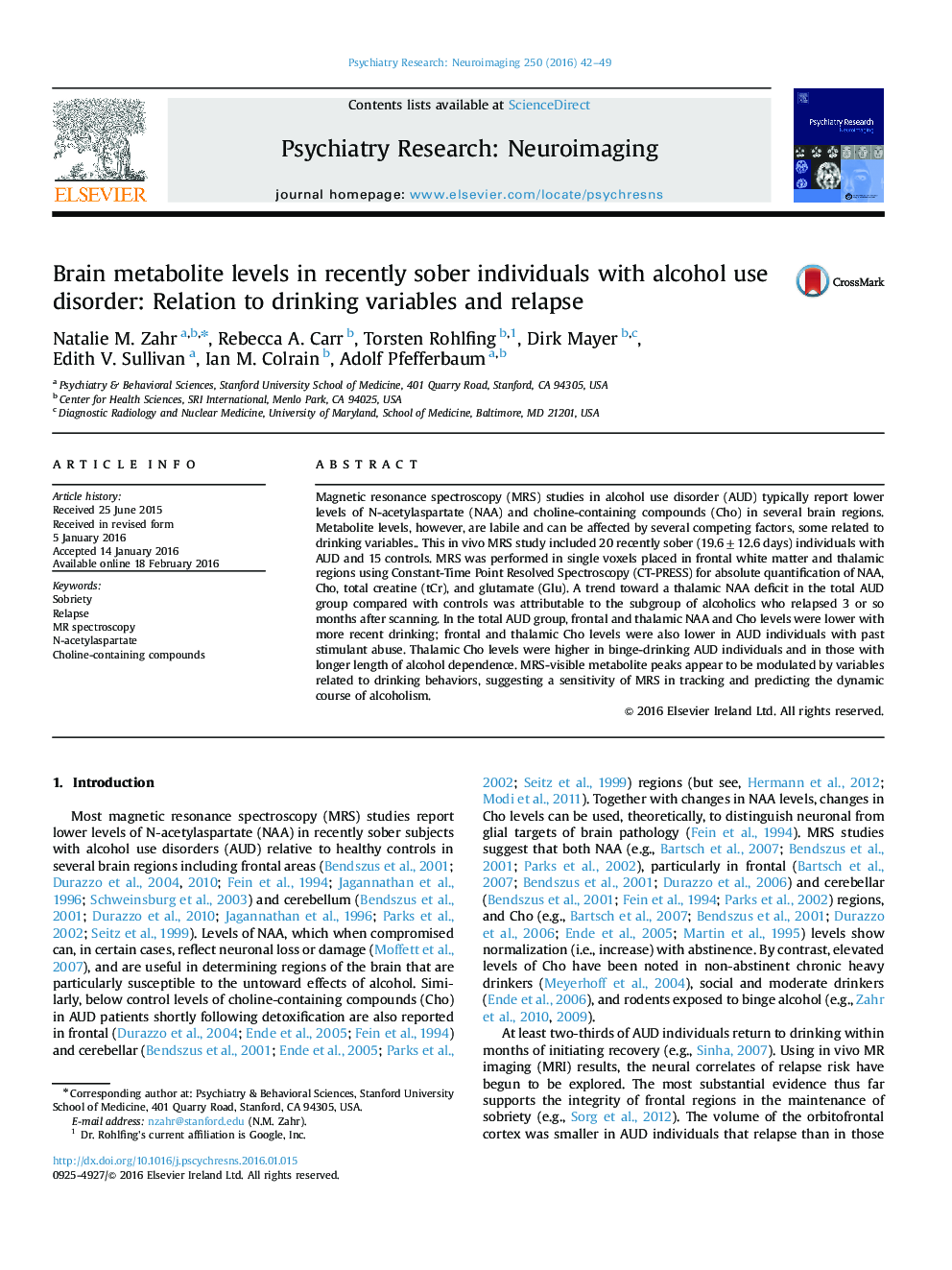| Article ID | Journal | Published Year | Pages | File Type |
|---|---|---|---|---|
| 334408 | Psychiatry Research: Neuroimaging | 2016 | 8 Pages |
•Many psychiatric illnesses are characterized by deficits in the social domain.•Alcoholics who relapsed 3 months post-MRI accounted for low thalamic NAA levels.•Relapsing alcoholics had low thalamic NAA and Cho levels relative to alcoholics who maintained 3-month sobriety and controls.•Thalamic Cho and tCr levels were higher with binge-drinking and longer AUD histories.
Magnetic resonance spectroscopy (MRS) studies in alcohol use disorder (AUD) typically report lower levels of N-acetylaspartate (NAA) and choline-containing compounds (Cho) in several brain regions. Metabolite levels, however, are labile and can be affected by several competing factors, some related to drinking variables.. This in vivo MRS study included 20 recently sober (19.6±12.6 days) individuals with AUD and 15 controls. MRS was performed in single voxels placed in frontal white matter and thalamic regions using Constant-Time Point Resolved Spectroscopy (CT-PRESS) for absolute quantification of NAA, Cho, total creatine (tCr), and glutamate (Glu). A trend toward a thalamic NAA deficit in the total AUD group compared with controls was attributable to the subgroup of alcoholics who relapsed 3 or so months after scanning. In the total AUD group, frontal and thalamic NAA and Cho levels were lower with more recent drinking; frontal and thalamic Cho levels were also lower in AUD individuals with past stimulant abuse. Thalamic Cho levels were higher in binge-drinking AUD individuals and in those with longer length of alcohol dependence. MRS-visible metabolite peaks appear to be modulated by variables related to drinking behaviors, suggesting a sensitivity of MRS in tracking and predicting the dynamic course of alcoholism.
